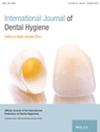Evaluation of Effects of Verbal and Video-Based Instructions on the Improvement of Oral Hygiene Status in Children: A Randomised Clinical Trial
Abstract
Objectives
To evaluate the effects of verbal and video-based oral hygiene instructions (OHIs) on the improvement of the oral hygiene status (OHS) in children of different age groups in the mixed dentition period.
Methods
In total, 202 children aged 6–9 and 10–12 years (n = 101 each) were included. Before providing the OHIs, the baseline OHS was determined using the Simplified Oral Hygiene Index (OHI-S). From each age group, approximately half of the participants were randomly assigned to the verbal (n = 50 and n = 51 from the 6–9-year and 10–12-year age groups, respectively) or video-based (n = 51 and n = 50 from the 6–9-year and 10–12-year age groups, respectively) OHI groups. Children were recalled after 30 days and post-instruction OHI-S were recorded. Data were analysed using Shapiro–Wilk, Mann–Whitney U, and Wilcoxon signed-rank tests. The statistical significance level was set at 5%.
Results
For both OHI methods, no significant difference was found between the age groups in terms of the OHI-S at both the pre- and post-instruction timepoints (verbal OHIs: p = 0.354, p = 0.860 and video-based OHIs: p = 0.174, p = 0.632, respectively). In both age groups, a significant difference was found between the baseline (pre-) and post-instruction OHI-S for both OHI methods (p < 0.001); the post-instruction OHS was found to be better than the pre-instruction OHS. In both age groups, video-based OHIs resulted in a significantly higher improvement in the OHS, compared with verbal OHIs (p = 0.004 and p < 0.001, respectively).
Conclusion
OHIs are effective in improving the OHS of children. In addition, video-based education is preferable to verbal instruction for improving the OHS of children.
Trial Registration
ClinicalTrials.gov identifier: NCT06449950

 求助内容:
求助内容: 应助结果提醒方式:
应助结果提醒方式:


